Information about drugs
Click/tap the titles below to find out more
Alcohol

Other names
Booze, Bevy, Drink, Ethyl Alcohol, Ethanol, Methylated Spirits, Beer, Cider, Sherry, Wine, Spirits, Liquors
Description
- available in various liquid forms including attractively flavoured alcopops and cocktails
- mixing different types of alcoholic drinks can make it difficult to know how much has been consumed
Effects
- immediate effects dependent upon amount used, age, physical build, mental state and other factors
- modest amounts make users feel relaxed with lowered inhibitions
- impacts reaction times and decision making
- heavier consumption can lead to emotional highs and lows, uncoordinated movement, blackouts and unconsciousness
- nausea and sickness
- drinking alcohol may be an acceptable social pastime but can lead to social and physical difficulties
- alcohol is a depressant
Health risks
- addiction
- liver damage
- delirium tremens (the ‘shakes’ or DTs)
- risk of suffocation from inhaling vomit when unconscious
- overdose is a particular risk if mixed with other drugs and can lead to death
- stomach disorders
- some cancers
Legal status
- can be sold to people over 18 yrs old in licensed premises.
- people over 14 yrs of age may visit licensed premises but cannot consume alcohol
- 16 yr olds can consume some alcohol (e.g. beer, cider or sherry) with a meal in a restaurant but not in a bar
- it’s illegal to give alcohol to a child under the age of 5
- being drunk in a public place and driving under the influence of drink or drugs are offences in law
Tobacco

Other names
Fags, Rollies, Smokes, Cigges, Snuff, Snout
Description
- leaves of the tobacco plant are dried then rubbed to produce a brown, flakey mixture
- it can be bought loose as rolling tobacco or in ready made cigarettes
- tobacco is most often smoked but can be chewed or sniffed (snuff)
Effects
- nicotine speeds up the heart rate and increases blood pressure
- first time smokers often feel sick and dizzy
- regular smokers say it helps them relax and deal with stress
Health risks
- tobacco is highly addictive
- smokers are more likely to get coughs and chest infections
- long term use can lead to cancer or heart disease
- smoking has been linked to the amputation of over 2,000 limbs a year in the UK
- it is estimated that smoking contributes to 120,000 premature deaths in the UK every year
- people breathing in second-hand cigarette smoke can end up with health problems
- e-cigarettes are significantly safer than smoked tobacco and can help smokers to quit
Legal status
- illegal for shopkeepers to sell tobacco or tobacco products to anyone under the age of 18
Cannabis
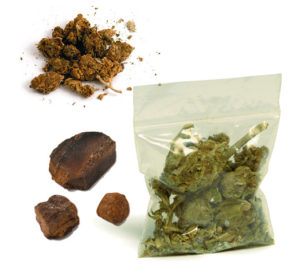
Other names
Marijuana, Draw, Blow, Weed, Puff, Shit, Hash, Ganja, Spliff, Wacky Backy, Green, Skunk (a stronger form of cannabis)
Description
- a solid, dark lump known as ‘resin‘
- leaves, stalks and seeds called ‘grass‘
- a sticky, dark oil
- can be rolled (usually with tobacco) in a spliff or joint, smoked on its own in a special pipe, or cooked and eaten in food
Effects
- users feel relaxed and talkative
- cooking the drug then eating it makes the effects more intense and harder to control
- may bring on a craving for food (this is often referred to as having the ‘munchies‘)
Health risks
- smoking it has similar risks to tobacco
- links to mental illness
- impairs the ability to learn and concentrate
- can leave people tired and lacking energy
- users may lack motivation and feel apathetic
- can make users paranoid and anxious, depending on their mood and situation
Legal status
- Class B (Misuse of Drugs Act 1971)
Nitrous Oxide
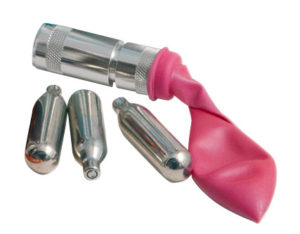
Other names
NOS, Laughing Gas, Balloons
Description
- small silver canisters containing gas, which is extracted into a balloon using a ‘cracker’ and then inhaled
- large medical cylinders
Effects
- can cause euphoria, calmness or giggles
- can also cause sound distortions and hallucinations
- effects start immediately and typically last 2-3 minutes
Health risks
- headaches and dizziness
- injuries from loss of coordination and numbness
- confusion and paranoia
- longer-term use can cause Vitamin B deficiency, anemia, and tingling and numbness in fingers and toes.
- inhaling direct from cannisters, especially cylinders, can damage lungs
- oxygen deprivation
Legal status
- Class B (Misuse of Drugs Act 1971)
Amphetamines
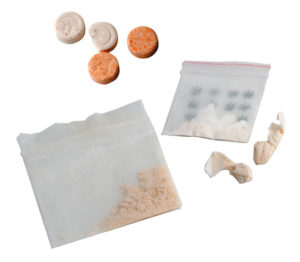
Other names
Speed, Whizz, Uppers, Amph, Billy, Sulphate, Crystal, Ice
Description
- grey or white powder that is snorted, swallowed, smoked, injected or dissolved in a drink
- tablets that are swallowed
- crystals that can be smoked
Effects
- excitement – the mind races and users can feel confident and energetic
- makes some users become tense and anxious health risks
- leaves users feeling tired and depressed for one or two days, and sometimes longer
- high doses repeated over a few days may cause anxiety and hallucinations
- long-term use puts a strain on the heart
- heavy, long-term use is linked to mental illness
- sharing injecting equipment puts users at risk of infections like hepatitis B or C and HIV/AIDS
Legal status
- Class B (but class A if prepared for injection) (Misuse of Drugs Act 1971)
Cocaine & crack
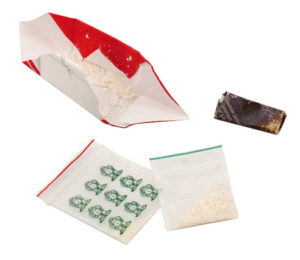
Other names
Cocaine: Coke, Charlie, Snow, C
Crack (a smokeable form of cocaine): Rock, Wash, Stone
Description
- Cocaine: white powder that is snorted up the nose, or sometimes dissolved and injected
- Crack: small raisin-sized crystals that are smoked
Effects
- sense of well-being, alertness, confidence
- the effects of cocaine last at least 30 minutes
- users are often left craving more
- crack has the same effects as cocaine, but with a more intense and shorter ‘high’ of about 5 to 10 minutes.
Health risks
- cocaine and crack are addictive
- eave users feeling tired and depressed for one or two days, and sometimes longer
- can cause chest pain and heart problems, that can be fatal
- heavy use can cause convulsions
- a habit can be expensive and hard to control
- crack and cocaine carry the same risks but, as the high can be so intense, crack use is even more difficult to control
- sharing equipment puts users at risk of infections like hepatitis B or C and HIV/AIDS
Legal status
- Class A (Misuse of Drugs Act 1971)
Ecstacy (MDMA)
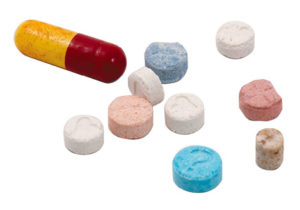
Other names
E, Doves, XTC, Disco Biscuits, Echoes, Hug Drug, Burgers, Molly (normally refers to crystals), Chemical name: MDMA (many tablets contain MDEA, MDA, MBDB)
Description
- tablets of different shapes, size and colour, which are swallowed.
- small crystals or powder which are dabbed or can be snorted
Effects
- users may feel alert and in tune with their surroundings
- sound, colour and emotions seem much more intense
- users may dance for hours
- the effects last from three to six hours
- can cause anxiety
Health risks
- risk of overheating and dehydration, especially if users dance energetically without taking breaks or drinking enough non-alcoholic fluids (users should sip about a pint of fruit juice, sports drink or water every hour)
- can leave users feeling tired and depressed for days
- use has been linked to liver and kidney problems
- some experts are concerned about links with long-term depression
Legal status
- Class A (Misuse of Drugs Act 1971)
LSD, magic mushrooms, hallucinogens
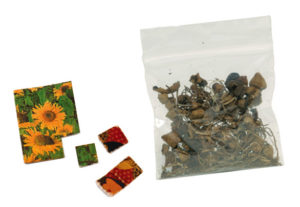
Other names
LSD: Acid, Trips, Tabs, Blotters, Microdots, Dots
Magic Mushrooms: ’Shrooms, Mushies
Description
- LSD: 1/4 inch squares of paper, often with a picture on one side, which are swallowed. Microdots and dots are tiny tablets
- Magic mushrooms:these mushrooms are eaten raw,dried cooked in food, or stewed into a tea
Effects
- effects are known as a ‘trip‘ and can last for up to 12 hours
- users will experience their surroundings in a very different way
- sense of movement and time may speed up or slow down
- objects, colours and sounds may be distorted
- magic mushrooms: similar effects to LSD, but the trip is often milder and shorter (about four hours)
Health risks
- once a trip starts it cannot be stopped
- users may have a ‘bad trip’, which can be terrifying
- ‘flashbacks‘ may be experienced where parts of a trip are re-lived sometime after the event
- can complicate mental health problems
- magic mushrooms can cause stomach pains, sickness and diarrhoea
- eating the wrong kind of mushroom can cause serious illness or even fatal poisoning
Legal status
- Class A (Misuse of Drugs Act 1971)
- Magic mushrooms became class A in July 2005 – even in their raw state if containing psilocybin
Ketamine
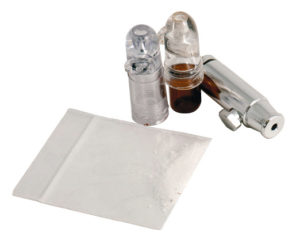
Other names
K, Special K, Super K, Vitamin K
Description
- a white powder that is dabbed, snorted or in tablet form. More rarely as a clear liquid that can be injected
Effects
- causes physical numbness
- causes hallucinations and out of body sensations
- trips can last for up to an hour, but the effects can be felt for hours after
Health risks
- difficulty in coordination and speech
- panic attacks and depression
- temporary paralysis and feeling sick
- users risk injury because they may not realise that they are hurt due to the pain killing properties of Ketamine
- high doses can lead to death caused by unconsciousness and the inhalation of vomit, especially when taken with depressants, such as alcohol
- users can also experience bladder problems such as an increased need to urinate, pain during urination, or passing blood in the urine
Legal status
- Class C (Misuse of Drugs Act 1971)
Gases, glues & aerosols

Other names
includes lighter gas refills, aerosols containing products such as hairspray, deodorants & air fresheners, tins or tubes of glue, some paints and thinners
Description
- sniffed or inhaled into the lungs
- gas products are sometimes squirted directly into the back of the throat
Effects
- effects feel similar to being very drunk
- users feel thick-headed, dizzy, giggly and dreamy
- users may hallucinate
- effects don’t last very long, but users can remain intoxicated all day by repeating the dose
Health risks
- nausea, vomiting, black-outs and heart problems that can be fatal
- squirting gas products down the throat can cause death – even on first use
- risk of suffocation if the substance is inhaled from a plastic bag over the head
- accidents can happen when the user is high because their senses are impaired
- long-term abuse of glue can damage the brain, liver and kidneys
Legal status
- illegal for retailers to sell gas lighter refills to anyone under 18, and it is illegal to sell gases, glues and aerosols to under-18s, or to people acting for them, if they suspect the product is intended for abuse
Heroin
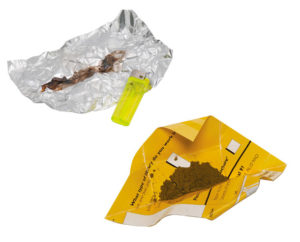
Other names
Smack, Brown, Horse, Gear, Junk, H, Jack, Scag
Description
- brownish-white powder, which is smoked, snorted or dissolved and injected
Effects
- small doses give the user a sense of warmth and well- being
- larger doses can make them drowsy and relaxed
Health risks
- heroin is highly addictive (even when smoked)
- users who form a habit may end up taking the drug just to feel normal
- excessive amounts can result in overdose, coma or death
- injecting can damage veins
- sharing injecting equipment puts users at risk of infections like hepatitis B or C and HIV/AIDS
Legal status
- Class C (Misuse of Drugs Act 1971)
Over-the-counter or prescribed
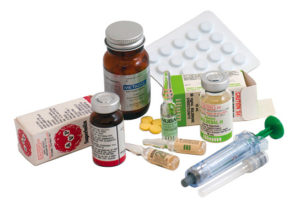
Other names
Pain killers, cold medication, hay fever remedies, tranquilizers, caffeine tablets, stimulants, depressants, amyl nitrate, butyl nitrate (poppers), steroids
Description
- tablets, capsules or liquids that are swallowed, sometimes inhaled or injected
Effects
- will do what it says on the packet
- may calm users and slow them down mentally
- could give them an energy rush
- or make them drowsy or sleepy
Health risks
- if any medication is taken without medical advice, you do not know what the side effects may be
- each individual may react differently, depending on their own medical situation
- some of these drugs can be addictive
- many drugs or medicines pose a risk, especially when mixed with alcohol or other drugs
Legal status
- depending on the substance, these are controlled by the Misuse of Drugs Act, the Medicines Act or other regulations
Novel psychoactive substances
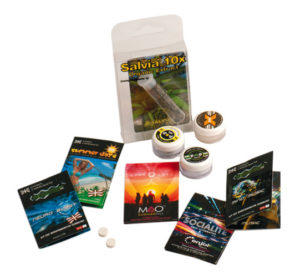
Other names
Range of drugs, which can include stimulants, hallucinogens, and synthetic cannabinoids.
Spice (smoking mixtures), legal highs (not actually legal) wide range of names for pills and powders.
Description
- sold in different forms including powders, pills, smoking mixtures, liquids, capsules, or perforated tabs.
- often have catchy brand names and attractive packaging
- list of ingredients on the package is often inaccurate
- powders can be white, brown, yellow or other colours. Can be little crystals or flour-like in consistency
- smoking mixtures, often in colourful packaging, with contents described as incense or herbal smoking blends
- contents look like dried herbs, vegetable matter or plant cuttings
- powders, pills or capsules tend to be snorted or swallowed
- smoking mixtures are either smoked in a joint/ spliff or by using a pipe
Effects
- Stimulants (mephedrone and naphyrone) act like amphetamines, cocaine, or ecstasy
- can make users feel energised, physically active, fast- thinking, very chatty and euphoric
- Sedatives (GHB/GBL) act like benzodiazepines (diazepam or Valium), making users feel euphoric, relaxed or sleepy
- Synthetic cannabinoids (Spice or Black Mamba) act like cannabis
- effects can be similar to cannabis intoxication: relaxation, altered consciousness, disinhibition, but also can act like a stimulant, leaving users energised and euphoric
- Hallucinogens/psychedelics (N-bombs) act like LSD, magic mushrooms, ketamine and methoxetamine.
- create altered perceptions and can make the user hallucinate with a sense of euphoria and being detached from the world
Health risks
- Stimulant NPS can make the user overconfident and disinhibited, induce anxiety, panic, confusion, paranoia,
- can cause psychosis, putting personal safety at risk.
- risks to heart and nervous system
- weaken the immune system
- Downers or sedative NPS can reduce inhibitions and slow down reactions
- can make the user lethargic, forgetful or physically unsteady
- can cause unconsciousness, coma and death, particularly when mixed with alcohol and/or with other downer drugs.
- some people feel very anxious after they stop taking downers and, if severe withdrawal develops, it can be dangerous and need medical treatment
- Synthetic cannabinoids can lead to severe or even life- threatening intoxication when taken in larger doses.
- can affect the central nervous system, and lead to seizures, fast heart rates, high blood pressure, sweating, increased body temperature, agitation and aggression.
- mental health risks
- Psychedelic or hallucinogenic NPS can cause confusion, panic and strong hallucinatory reactions (known as ‘bad trips’)
- can make the user behave erratically and interfere with judgment, putting personal safety at serious risk – including from self-harm.
- risks increase where any drug is taken in combination with others or alcohol
Legal status
- illegal to give away or sell.
- penalty for supply and production can be up to 7 years in prison, an unlimited fine or both
- can be fined, banned from driving or receive a prison sentence if caught driving under the influence
- parents could be prosecuted if children are caught supplying drugs from their home